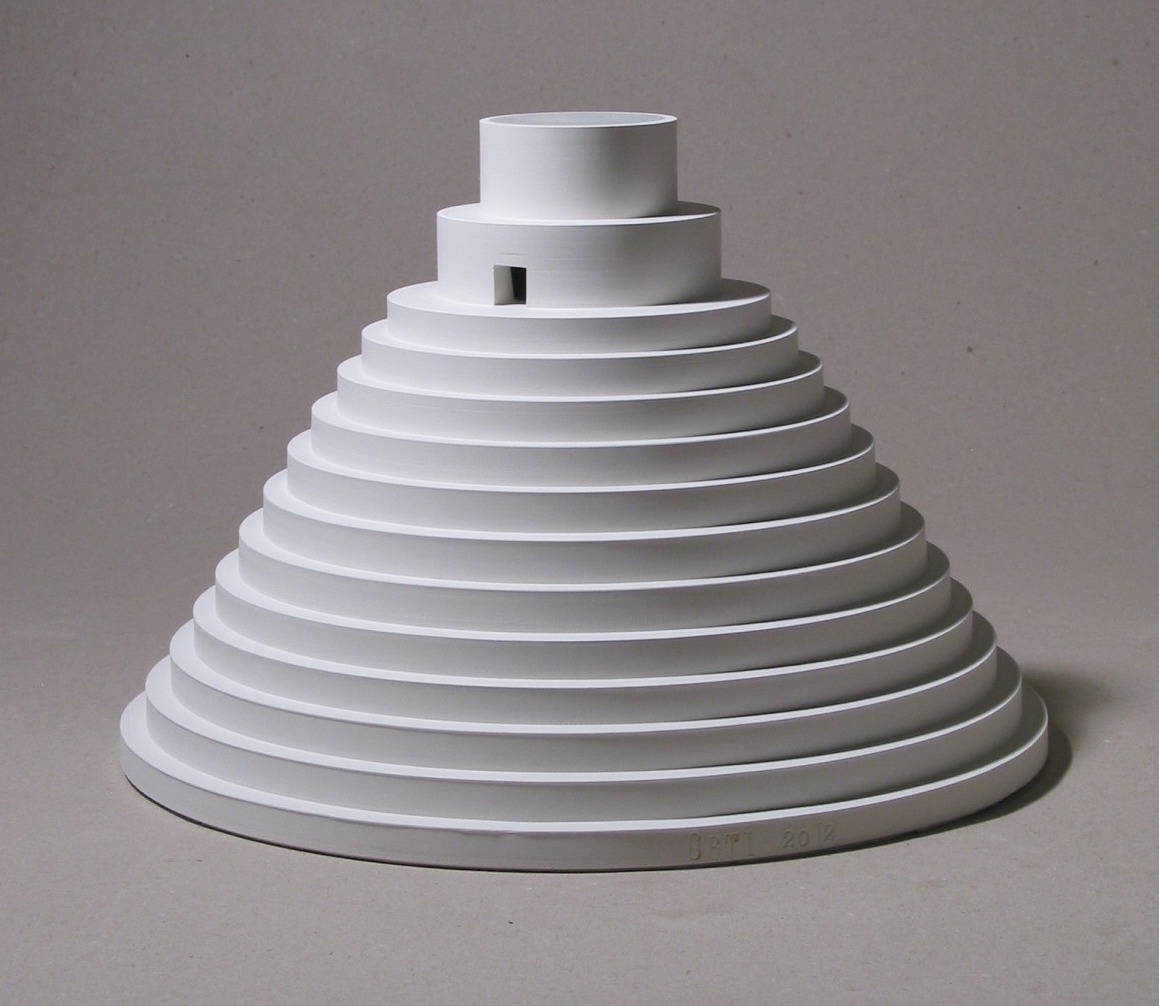Juan Ortí is an artist based in Valencia, Spain. He sculpts interpretations of geometric architectural forms seen frequently in everyday life, but his work has vessel roots taking the bottle to a building. The photographs of his art are deceptive, with close-ups making them look like massive buildings. The visual information in his work is beautifully reduced, bringing an elegance to the typically soulless, stark industrial forms.

He uses the wheel as a machining tool to produce parts to be assembled. This process creates a cold feeling to the objects but by reducing the amount of visual information he focuses the viewer on just a few small but profound details. The texture of the objects is dry and soft, catching dramatic lighting perfectly and giving the table-size sculptures the illusion of building-size scale. Ortí does not completely eliminate the process marks, but leaves the subtle tooling from the rotating process, details that remind the viewer of the origins and actual scale of their experience – a reality check.

The raw fired clay is typically greyscale, referencing metallic industrial architecture like silos, tanks, and factories. He has stripped it of the vibrant color of the earlier temple works seen towards the end of this post. Because of the theme, his work immediately conjures melancholy feelings of overbearing urban life and industrialization. However, their simple forms and relative scale make the work also related to children’s building blocks. Ortí plays with basic composition, experimenting with fun scenarios, even supporting the heavy cylinders on humorously small blocks in his piece Hover. The overall mood of Ortí’s sculptures does not project a specific attitude towards industry, positive or negative, but rather they are experimental interpretations, meditations on modern everyday life.
There is another post in this issue on Juan Orti’s current work. It shows Orti’s work in black and white. Seeing as he works exclusively in porcelain, and lately without color, the monochromatic photographs offer another way of looking at his art without much loss of information but with a distinct increase in spatial drama. These two posts pose a question, what sells his vision best, with or without color?
Justin Crowe is Writer-at-Large for CFile.
Any thoughts about this post? Share yours in the comment box below.


Juan Ortí García, Untitled II. 2013. 45x19x19 cm










Juan, tu trabajo me parece extraordinario. Un placer disfrutarlo.
I’m an Israeli ceramic arist. I love your page.